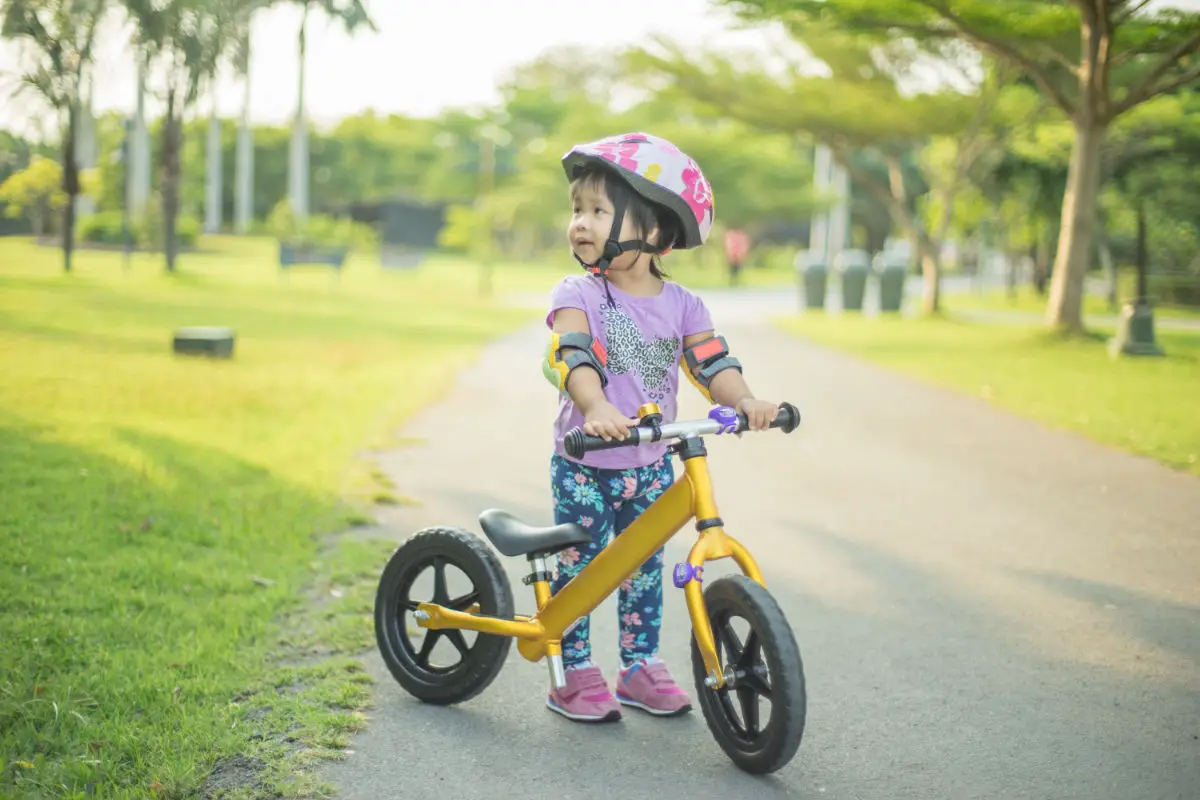What Age For Balance Bikes? The Details

Children who are learning to ride a bike can benefit from using balance bikes, sometimes referred to as push bikes or run bikes.
Children can learn balance and coordination by pushing these bikes with their feet as they have no pedals.
Since they offer young children an easy and efficient way to learn how to ride a bike, balance bikes have grown in popularity in recent years.
But at what age should balance bikes be used?
In this post, we’ll look at the age range for balance bikes and talk about some advantages and things to think about when choosing one for a kid.

The age range for balance bikes
Children as young as 18 months old can ride balance bikes, and they can be used until they are about 5 or 6 years old.
However, a child’s particular growth and capacity will determine whether they are ready for a balancing bike.
18 months to 3 years
An excellent way to introduce the idea of riding a bike to kids between the ages of 18 months and 3 is by using a balancing bike.
Children are normally able to run and walk well at this age, and they are beginning to develop their coordination and balance.
They can hone these abilities and become ready for the next stage of learning to ride a conventional bike with the aid of a balancing bike.
3 years to 5 years
A balance bike can be a smooth transition from a tricycle to a regular bike for kids between the ages of 3 and 5.
Children are often more coordinated and self-assured at this age, and they are prepared to learn how to balance on two wheels.
Children can learn the skills necessary to ride a regular bike independently while transitioning from a tricycle to a balancing bike smoothly and gradually.
5 years and up
For kids aged 5 and older, a balancing bike might not be required if they are already comfortable and adept at riding a regular bike.
For its simplicity and ease of use, a balance bike may still be preferred by some kids, who may continue to use one for leisurely rides or as a means to work on their balance and coordination.

Benefits of balance bikes
Balance bikes offer several benefits for young children learning how to ride a bike:
Develop balance and coordination
Children must propel themselves forward with their feet and steer and balance their balance bikes because they lack pedals.
They gain balance and coordination while doing this, which also gets them ready for the next stage of learning to pedal.
Confidence and independence
Children can ride balance bikes with confidence and independence since they can easily start, stop, and regulate their pace.
This may boost their self-esteem and motivate them to attempt new activities.
Easier to ride
Because they are lightweight and have a low standover height, balance bikes are typically simpler to ride than standard bikes.
Young children can easily get on and off the bike as a result, making them more comfortable and accessible.

Considerations when selecting a balance bike
When selecting a balance bike for a child, there are a few considerations to keep in mind:
Wheel size
A balancing bike’s wheel size is a crucial consideration because it influences the child’s ability to steer the bike and reach the ground.
Generally speaking, a balancing bike with 12-inch wheels is a decent option for kids between the ages of 18 months and 3 years.
A balancing bike with a 14-inch or 16-inch wheel size is typically a decent option for kids between the ages of 3 and 5.
It’s crucial to pick a balancing bike with the right wheel size for the child’s height and development because doing so will guarantee that they can reach the ground comfortably and have good control over the bike.
Weight and materials
A balancing bike’s weight and construction are also crucial factors.
A youngster will find it simpler to control and navigate a lightweight balance bike, and it may also be more pleasant for them to ride.
Look for a balancing bike composed of light materials, such as carbon fiber or aluminum.
Adjustability
Another crucial aspect to take into account when choosing a balancing bike is adjustability.
To guarantee that the balancing bike is cozy and correctly sized for the child, look for one that can be quickly modified to meet the child’s height and needs.
While some balance bikes have adjustable handlebars and seat heights, others just have movable footrests.
Brakes
Some balance bikes come with brakes, while others do not.
Brakes can be helpful for children who are learning how to stop and control their speed, but they may not be necessary for younger children who are just starting to ride.
Consider the child’s ability and confidence when deciding whether or not to choose a balance bike with brakes.
Conclusion
While some balance bikes have brakes, others do not. However, for younger children who are just learning to ride, brakes may not be necessary.
Brakes might be useful for youngsters who are learning how to stop and regulate their speed.
To decide whether or not to get a balance bike with brakes, take the child’s aptitude and confidence into account.



